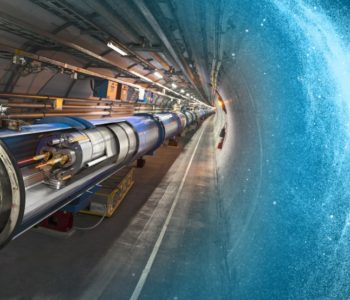 Science
Science
Lisa Randall: Enlightened on Dark Matter
Dr. Lisa Randall is a scientist who is comfortable pondering the enigmatic reaches of the universe and trying to make sense of it. She has been named one of Time Magazine’s 100 most influential people in the world and is the Frank B. Baird, Jr. Professor of Science at Harvard University. She is the author of numerous books, including The New York Times bestsellers Warped Passages: Unraveling the Mysteries of the Universe’s Hidden Dimensions and Knocking on Heaven’s Door: How Physics and Scientific Thinking Illuminate the Universe and the Modern World. These books seek to elucidate difficult-to-grasp aspects of particle physics.
She is also unique compared to many “celebrity scientists,” a term that Dr. Randall would probably bristle at because her work is still very much on the cutting edge of research in her field. The fact that she can write books that can explain dark matter to the masses while at the same time challenging the paradigms of the brightest minds in physics speaks to an intellect that is constantly seeking new ways of examining the mysteries of the universe. Her meteoric rise in her field began when she proposed the Randall-Sundrum model, along with Dr. Raman Sundrum, which used warped geometry to describe our world as situated in a higher dimension of a five-dimensional model. She has also made innumerable contributions to the understanding of the Standard Model and supersymmetry.
I caught up with Dr. Randall to discuss her latest book, Dark Matter and the Dinosaurs: The Astounding Interconnectedness of the Universe. This eloquent tome seeks to explain dark matter, which, while comprising 85% of the universe, remains largely a mystery. By exploring a diverse range of scientific topics and positing that dark matter may be responsible for extinction-level events, Dr. Randall posits that a plane of dark matter exists on the plane of the Milky Way Galaxy. This matter may be responsible for gravitational anomalies that produce more impact events here on Earth. It’s less a theory about what happened to the dinosaurs and more a jumping-off point to explore how dark matter may interact with the visible universe.
She speaks in the clipped, matter-of-fact manner of a person at ease discussing ideas that for most people would stretch comprehension. I asked her what it was like writing a book that delved into areas that were outside her usual field. “It’s very compelling, and it’s also kind of fun. It’s a lot easier to write about some of these other things because it’s so much less abstract, but it was also a lot of fun to learn about how much advancement has been made in some of these other fields in physics and science. A lot of books about science focus on one small part of the story. I like that it’s integrated and part of the bigger picture.”
She has received some pushback for putting forward a theory not backed up by hard data – that it is merely a thought experiment. However, if you read the book, she is very open about the fact that it’s just a hypothesis for the time being. But where Dark Matter and the Dinosaurs shines is in its ability to describe a universe that is both baffling and awe-inspiring. She pushes scientists to think of new ways to interact forces like gravity and dark matter.
Dark matter, which is the crux of her book, remains something that is difficult to grasp, although its ominous name is really just a misnomer; its name derives from how it interacts with light (it doesn’t). Dr. Randall explained dark matter this way: “It’s just matter. It interacts with gravity like matter. What distinguishes it from ordinary matter is that it does not interact with light or other standard model forces. It’s not made of the same stuff. It’s not made up of atoms, which are, in turn, made up of charged particles. It’s just different matter.”
Tantalizing projects like the Large Hadron Collider in CERN are beginning to open up our understanding of these theoretical aspects of the universe that physicists have known existed but hadn’t previously been able to prove. I asked her about the prospect of this project, confirming some of her life’s work. “Don’t forget, we had a long time to anticipate the Higgs. I’m excited about them looking for a warped extra dimension of space, for example, which is something that I’ve worked on,” Dr. Randall explained.
Dr. Randall discusses the LHC with her usual coolness; there’s barely a hint of excitement. Rather, there’s the rationality of a scientist prepared to find the answers to questions that seem unknowable. There’s also modesty in that answer because if the Large Hadron Collider does find that extra dimension, confirming the Randall-Sundrum model, she would likely win the Nobel Prize in Physics. Solving the mysteries of the universe while also explaining them to you and me is all in a day’s work for one of the world’s sharpest minds.
Dark Matter and the Dinosaurs: The Astounding Interconnectedness of the Universe is now available in paperback.








